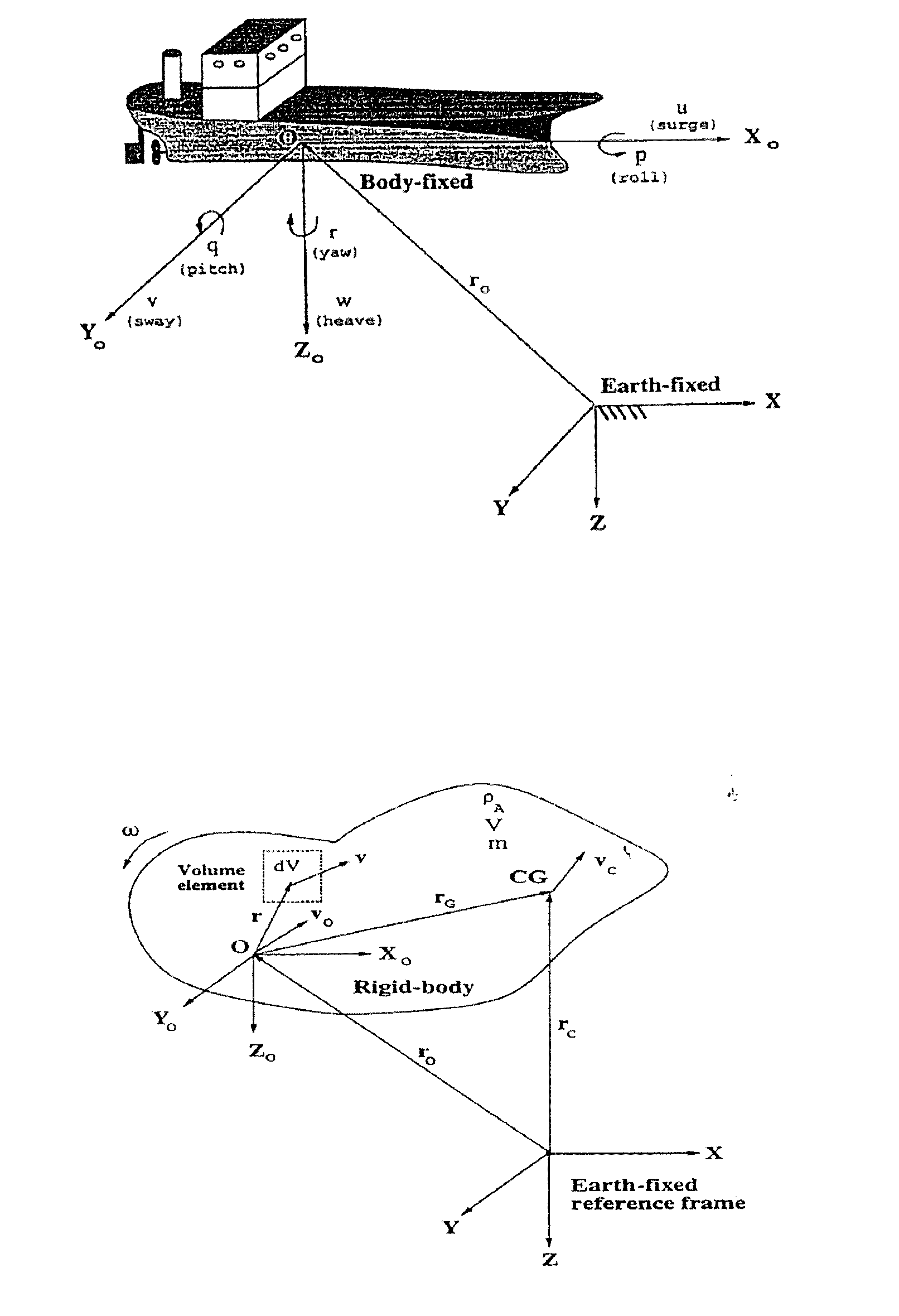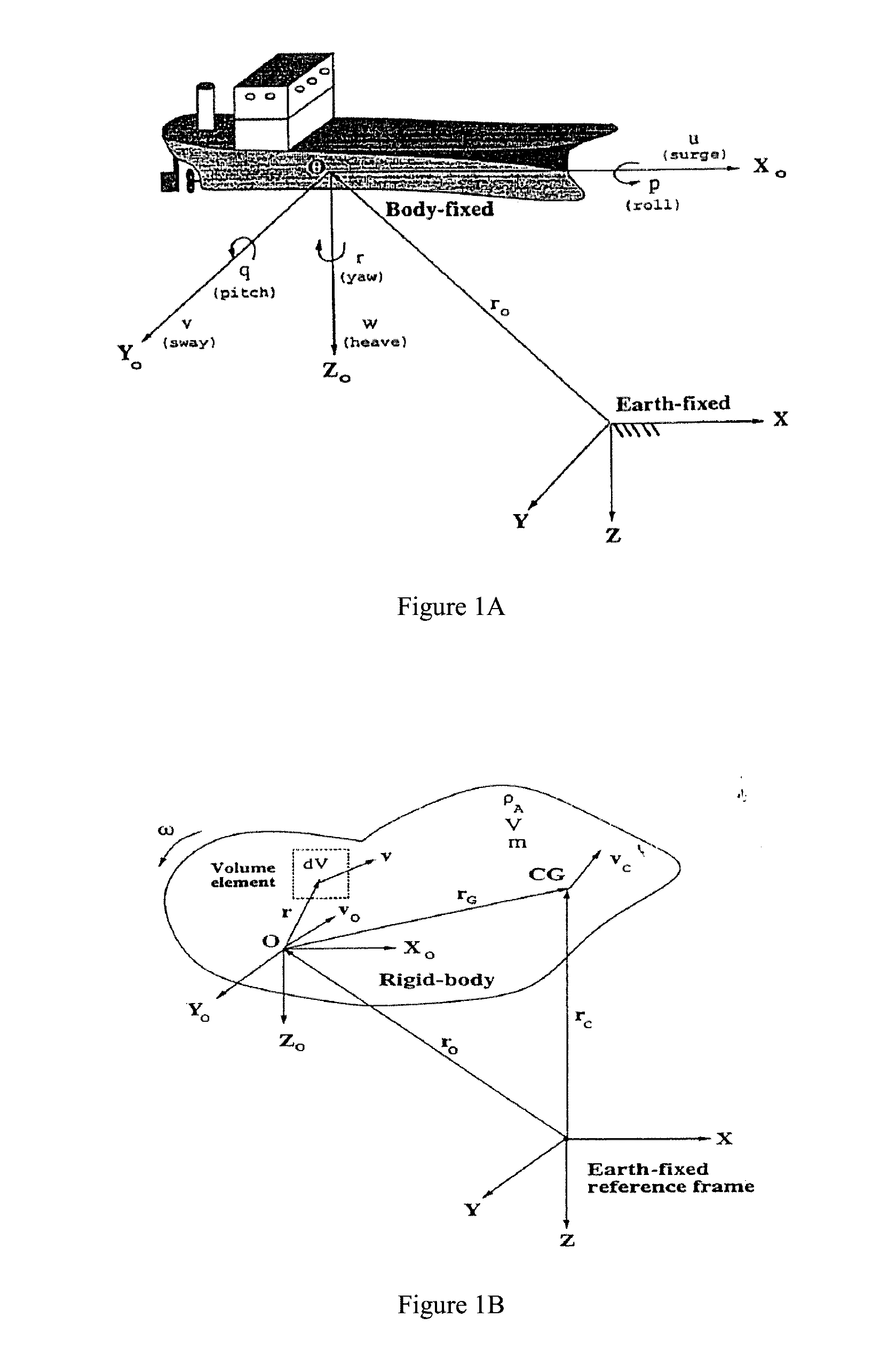POSE DETECTION AND CONTROL OF UNMANNED UNDERWATER VEHICLES (UUVs) UTILIZING AN OPTICAL DETECTOR ARRAY
- Summary
- Abstract
- Description
- Claims
- Application Information
AI Technical Summary
Benefits of technology
Problems solved by technology
Method used
Image
Examples
case 1
[0272] The Light Source and the UUV Platform is Aligned
[0273]In this case, the UUV platform is stationary at the beginning of the experiment at x=8.5 m for 5.5 s. Then, the tow tank is commanded to go to 4.5 m (FIG. 5H). The offset of the UUV platform in y and z-axis are zero with respect to the light source.
[0274]FIG. 5H shows Experimental Case 1: Top left: Reference position, raw x-axis pose estimate, corrected x-axis pose estimates, and the moving average window result. Top right: Velocity reference, raw velocity estimates and moving average window of size 10 applied to the raw velocity estimates. Bottom left: y-axis pose estimate and the applied moving average window of size 10 during the motion. Bottom right: z-axis pose estimate and the applied moving average of size 10 during the motion.
[0275]The results for the first experimental case show that x-axis pose estimate is within 0.3 m accuracy at all times during both when the platform is stationary and dynamic. The corrected an...
case 2
[0276] The Light Source and the UUV Platform is at Maximum Offset
[0277]The second experimental case is identical with the first experimental case with the difference of y and z-axis offsets (FIG. 5I). In this experiment, y-axis offset is set to 0.6 m and z-axis offset is set to 0.8 m lower than the light source (1.8 m below the water surface). The UUV platform is commanded to go to final x-axis position of 4.5 m from its initial x-axis position of 8.5 m away from the light source at 2.5 s.
[0278]FIG. 5I shows Experimental Case 2: Top left: Reference position, raw x-axis pose estimate, corrected x-axis pose estimates, and the moving average window of size 10 result. Top right: Velocity reference, raw velocity estimates and moving average window of size 10 applied to the raw velocity estimates. Bottom left: y-axis pose estimate and the applied moving average window of size 10 during the motion. Bottom right: z-axis pose estimate and the applied moving average of size 10 during the moti...
PUM
 Login to View More
Login to View More Abstract
Description
Claims
Application Information
 Login to View More
Login to View More - R&D
- Intellectual Property
- Life Sciences
- Materials
- Tech Scout
- Unparalleled Data Quality
- Higher Quality Content
- 60% Fewer Hallucinations
Browse by: Latest US Patents, China's latest patents, Technical Efficacy Thesaurus, Application Domain, Technology Topic, Popular Technical Reports.
© 2025 PatSnap. All rights reserved.Legal|Privacy policy|Modern Slavery Act Transparency Statement|Sitemap|About US| Contact US: help@patsnap.com



